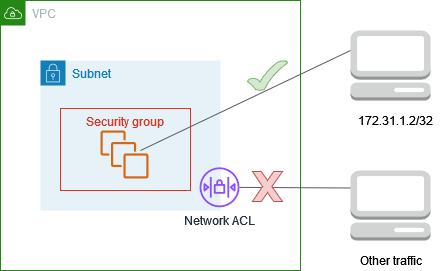A 20 minute read, to depict various scenarios for Virtual Private Clouds
Acronyms
- VPC - Virtual Private Cloud
- IP - Internet Protocol
- NAT - Network Address Translation
- CLI - Command Line Interface
- SDK - Software Development Kit
- CIDR - Classless Inter-Domain Routing
Sharing Public Subnets and Private Subnets
In this scenario, one account is responsible for the infrastructure, including subnets, route tables, gateways, and CIDR ranges. This account is also responsible for allowing other accounts in the same AWS Organization use the subnets.
Account A (VPC Owner) uses AWS Resource Access Manager to create a Resource
Share for sharing private and public subnets.
- Private subnet shared with Accounts B and C.
- Public subnet shared with Account D
Account A manages the IP infrastructure, including the route tables for both the public and private subnets. There is no additional configuration required for shared subnets, so the route tables are the same as unshared subnet route tables.
Each account can only see the subnets that are shared with them, for example, Account D can only see the public subnet. Each of the accounts can control their resources, including instances, and security groups
AWS VPC - Share internet gateway example

AWS VPC - Share internet gateway example. Source: docs.aws.amazon.com
Controlling Access to Instances in a Subnet
In this example, instances in your subnet can communicate with each other, and are
accessible from a trusted remote computer. The remote computer might be a computer in
your local network or an instance in a different subnet or VPC. You use it to connect
to your instances to perform administrative tasks. Your security group rules and
network ACL rules allow access from the IP address of your remote computer
(172.31.1.2/32). All other traffic from the internet or other networks is denied.
NACL Example

NACL Example. Source: https://docs.aws.amazon.com/../nacl-example-diagram.png
All instances use the same security group with the following rules:
Inbound Rules
Protocol Type | Protocol | Port Range | Source | Comments
All traffic | All | All | sg-1a2b3c4d | Enables instances that are associated with the same security group to communicate with each other. SSH | TCP | 22 | 172.31.1.2/32 | Allows inbound SSH access from the remote computer. If the instance is a Windows computer, this rule must use the RDP protocol for port 3389 instead.
Outbound Rules
Protocol Type | Protocol | Port Range | Destination | Comments
All traffic | All | All | sg-1a2b3c4d | Enables instances that are associated with the same security group to communicate with each other. Security groups are stateful. Therefore you don’t need a rule that allows response traffic for inbound requests.
The subnet is associated with a network ACL that has the following rules:
Inbound Rules
Rule # Type Protocol Port Range Source Allow/Deny Comments
100 SSH TCP 22 172.31.1.2/32 ALLOW Allows inbound traffic from the remote computer. If the instance is a Windows computer, this rule must use the RDP protocol for port 3389 instead.
-
All All All 0.0.0.0/0 DENY Denies all other inbound traffic that does not match the previous rule.
Outbound Rules
Rule # Type Protocol Port Range Destination Allow/Deny Comments
100 Custom TCP TCP 1024-65535 172.31.1.2/32 ALLOW Allows outbound responses to the remote computer. Network ACLs are stateless. Therefore this rule is required to allow response traffic for inbound requests.
-
All traffic All All 0.0.0.0/0 DENY Denies all other outbound traffic that does not match the previous rule.
The above scenario gives you the flexibility to change the security groups or security group rules for your instances, and have the network ACL as the backup layer of defense. The network ACL rules apply to all instances in the subnet. If you accidentally make your security group rules too permissive, the network ACL rules continue to permit access only from the single IP address.
To view VPC security best practices as well as recommended rules for various scenarios click here
Services Using AWS PrivateLink and VPC Peering
An AWS PrivateLink service provider configures instances running services in their VPC, with a Network Load Balancer as the front end. Use intra-region VPC Peering (VPCs are in the same Region) and inter-region VPC Peering (VPCs are in different Regions) with AWS PrivateLink to allow private access to consumers across VPC peering connections.
Consumers in remote VPCs cannot use Private DNS Names for Endpoint Services names across peering connections. They can however create their own private hosted zones on Route 53, and attach it to their VPCs to use the same Private DNS name. For information about using transit gateway with Amazon Route 53 Resolver, to share PrivateLink interface endpoints between multiple connected VPCs and an on-premises environment, see Integrating AWS Transit Gateway with AWS PrivateLink and Amazon Route 53 Resolver
Examples
@TODO Explode these examples
- Example: Service Provider Configures the Service
- Example: Service Consumer Configures Access
- Example: Service Provider Configures a Service to Span Regions
- Example: Service Consumer Configures Access Across Regions